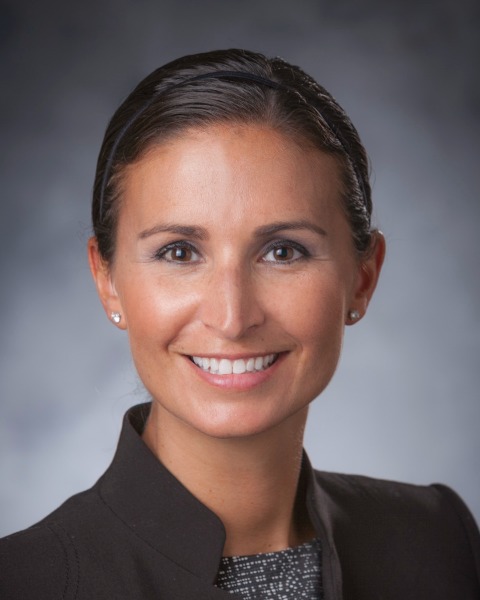Breast
P6: Comparison of Survival Outcomes for Select Patients with Stage III vs Stage IV Disease

Anna D. Louie, MD
General Surgery Resident
Duke University Medical Center, United States
Anna D. Louie, MD
General Surgery Resident
Duke University Medical Center, United States- ST
Samantha M. Thomas, MS
Principal Biostatistician
Duke Cancer Institute, United States .jpg)
Laura H. Rosenberger, MD MS (she/her/hers)
Breast Surgical Oncologist
Duke University
Durham, North Carolina, United States- GD
Gayle D. DiLalla, MD
Vice Chair of Equity, Diversity, and Inclusion
Department of Surgery, Duke University Medical Center, United States 
Kendra J. Parrish, D.O.
Breast Surgical Oncologsit
Duke University
Durham, North Carolina, United States- TW
Ton Wang, MD, MS
Assistant Professor of Surgery
Duke University, United States 
Hannah E. Woriax, MD (she/her/hers)
Assistant Professor of Surgery
Duke University Medical Center, United States.jpg)
E. Shelley Hwang, MD, MPH
Mary and Deryl Hart Distinguished Professor of Surgery
Duke University School of Medicine
Durham, North Carolina, United States
Jennifer K. Plichta, MD, MS (she/her/hers)
Associate Professor of Surgery, Surgical Oncology
Duke University School of Medicine
Durham, North Carolina, United States
Oral Poster Presenter(s)
Author(s)
The current breast cancer staging system categorizes all de novo metastatic breast cancer (MBC) as stage IV, without any subcategories. However, there is significant heterogeneity in overall survival (OS) for both stage III and stage IV breast cancer. Using a recently defined prognostic staging system that creates stage IV subcategories (IVA/B/C/D) based on disease characteristics (such as biomarkers and extent of disease), we compared OS outcomes for these subcategories.
Methods:
Using the National Cancer Database (2010-2019), adult patients diagnosed with stage III or IV breast cancer were identified and stratified as IIIA/B/C or IVA/B/C/D based on published criteria. The Kaplan-Meier method was used to estimate OS, and log-rank tests were used to test for differences in OS between groups. Cox Proportional Hazards models were used to estimate the association of stage subcategories with OS after adjustment for select covariates; hazard ratios (HRs) and 95% CIs reported. Subgroup analyses were conducted for those who received trimodal therapy (systemic therapy, radiation, and surgery).
Results:
Of the 81,128 patients included, the median follow-up was 76.8 months (95% CI76.5-77.3), and 83.5% were stage III vs 16.5% stage IV. The unadjusted 3y and 5y OS rates for stage III were 85.7% (95% CI 85.4-86.0) and 75.9% (95% CI 75.6-76.3), compared to 68.3% (95% CI 67.5-69.1) and 51.9% (95% CI 51.0-52.8) for stage IV.
Further subcategorization of stage III included 47.4% IIIA, 34.1% IIIB, and 18.6% IIIC; further subcategorization of stage IV included 10.7% IVA, 55.8% IVB, 22.2% IVC, and 11.3% IVD. While OS steadily declined within each stage individually (III separate from IV), there was notable overlap between the stage subcategories (Figure). For example, ranking the unadjusted 3y OS from best to worst included: 89.9% IIIA, 88.7% IIIB, 87.0% IVA, 78.4% IVB, 69.6% IIIC, 54.3% IVC, and 28.5% IVD. Similar trends were noted after adjustment for demographic and treatment variables: (HR ranked best to worst OS) stage IIIA reference, IIIB 1.10 (95% CI 1.06-1.14), IVA 1.20 (95% CI 1.07-1.36), IVB 1.83 (95% CI 1.72-1.95), IIIC 1.94 (95% CI 1.85-2.03), IVC 3.61 (95% CI 3.35-3.88), IVD 6.74 (95% CI 6.07-7.49; overall p< 0.001). This trend persisted among patients who received trimodal therapy.
Conclusions:
Using the recently proposed stage IV classification scheme, we find that OS of some stage IV breast cancers have significant overlap with some stage III, with 3-year OS of stage IVA disease approaching 90%. These findings have important implications for patient counseling, treatment, and clinical trial design.
Learning Objectives:
- Describe the survival outcomes for patients with stage III and stage IV breast cancer.
- Understand the factors that influence prognosis for patients with stage III and stage IV breast cancer.
- List which patients with stage IV disease may actually have a better survival than some stage III breast cancer patients.
